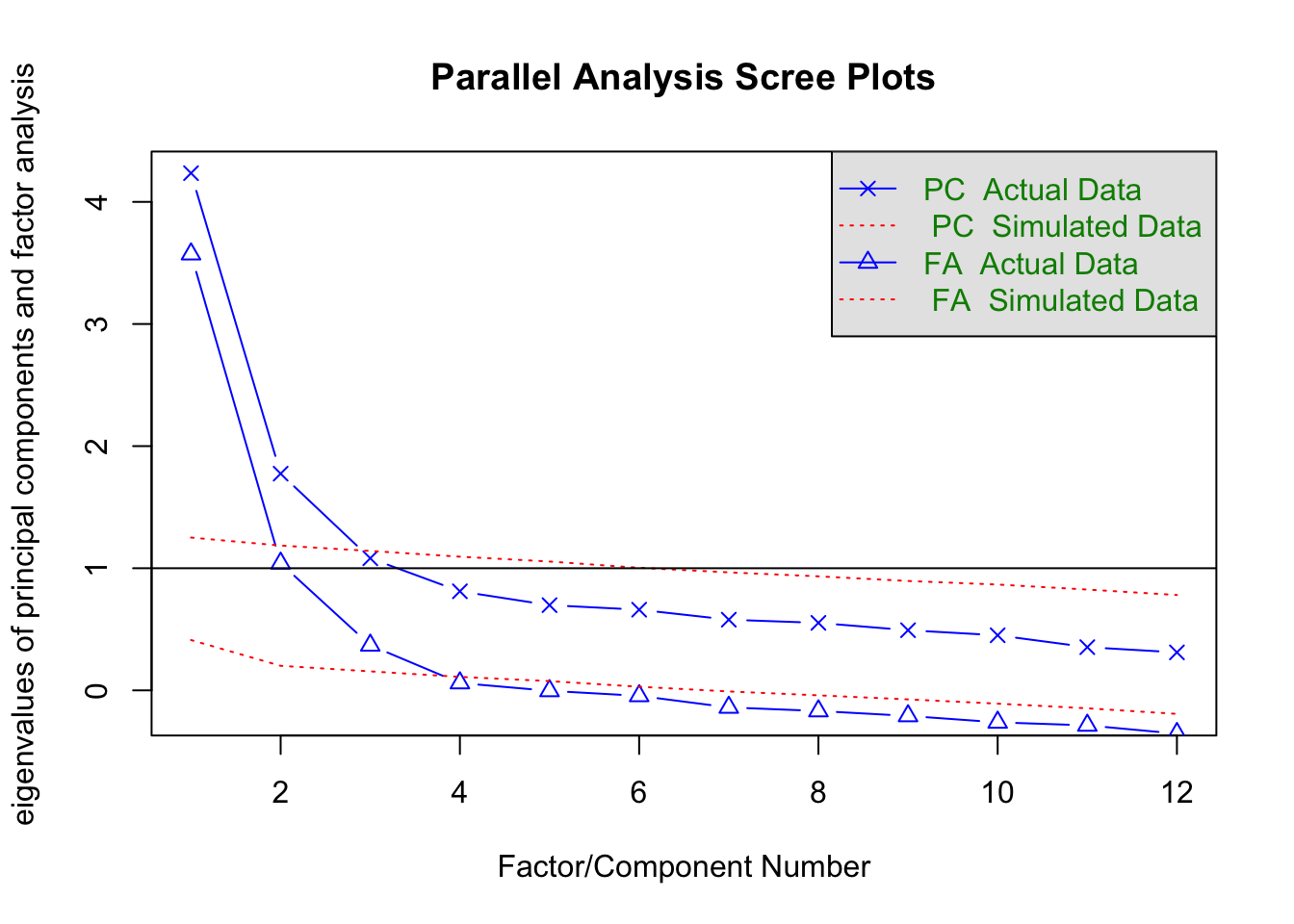13.4 Factor extraction
The first step in EFA is to determine how many latent variables we should retain for a given scale. There are different methods to extract the appropriate number of factors. Here, we will cover how to extract factors using the parallel analysis as it is a better factor extraction method than popular alternatives such as the eigenvalues approach and the scree test.
Parallel analysis is the most robust factor extraction method so far (Horn, 1965). The rationale of parallel analysis is to simulate a data set under similar conditions (e.g., same number of respondents and items). For doing so, the algorithm extracts thousand random samples that are going to be compared to the actual data. The number of factors to retain is shown by where the tracings for actual and simulated data cross using the PC method (Figure 13.7).
In our example, we should extract only two factors because those are the eigenvalues located above the red line of the simulated data that crosses the blue line of the actual data under the principal components method (PC). We have set the number of observations (our sample size; N = 510) as the second argument of the function fa.parallel().
fa.parallel(corre, n.obs = 510)
Figure 13.7: Parallel analysis scree plots.